Best time to visit Japan and more: Your essential Japan travel guide
Want to know when is the best time to visit Japan on a holiday? Discover the answer and more in our Japan travel guide, including what to do in Japan and where to stay.
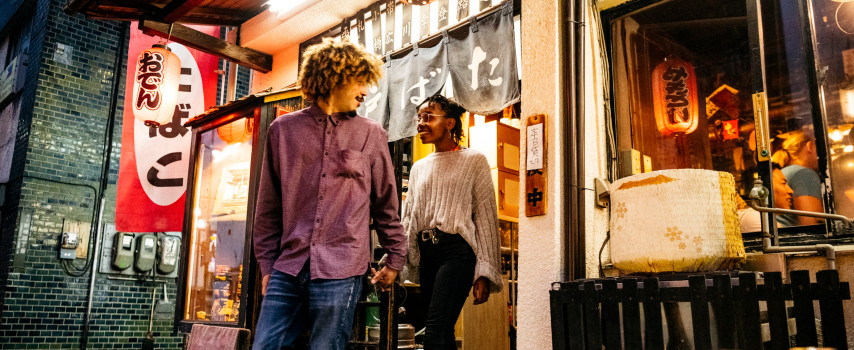
Source: Getty
Dreaming of a trip across the world to the islands of East Asia? From the neon-lit streets of Tokyo to the serene temples of Kyoto, Japan offers an unforgettable fusion of traditional culture and cutting-edge technology. Still on the fence? Our Japan travel guide can help you get inspired while planning your journey to the enchanting archipelago.
Whether you're a seasoned globetrotter or embarking on your first international adventure, this Japan travel guide provides useful recommendations and tips to help ensure your trip is fun and runs smoothly. It'll help you navigate your travel planning with tips for the best time to visit Japan, where to stay, what to pack, and what the must-see spots are. Get ready for an exciting journey to the Land of the Rising Sun!
“Japan is an incredibly popular holiday destination for travellers living in Australia because of the diverse experiences it offers — as well as its proximity to home.
“As with any holiday, planning your trip in advance, and taking into account safety and security concerns you may encounter while travelling through Japan, is a smart thing to do. That way, you will be more likely to have a smoother, safer holiday.”
Rodger Cook, Cover-More's General Manager of Global Security.
Jump to:
- Essential information about Japan
- Best time to visit Japan
- What to do and see in Japan
- What to eat and drink in Japan
- How to get to Japan from Australia
- How to get around Japan
- Where to stay in Japan
- What to pack for a trip to Japan
- Words to know in Japanese
- Japanese public holidays to know about
Essential information about Japan
Now that you're getting ready to explore Japan, it's time to take a moment to get familiar with a few key details about your destination. This will help you be more prepared before you depart and navigate smoothly through your journey. Let’s explore some essential facts you should know about Japan before you start packing.
Language
The official language in Japan is Japanese. While you may find English speakers in the major cities and tourist areas, it's worth learning a few basic phrases to help you get by.
Currency
Japan’s official currency is the Yen (JPY). Credit and debit cards are accepted in most places, but it's always a good idea to carry some cash for smaller establishments and rural areas.
Visa Requirements
Most Australian citizens qualify for a 90-day visa-free stay in Japan. However, for non-citizens, longer stays or specific purposes such as study or work, a visa might be required. For more detailed information, please refer to smartraveller.gov.au.
Driving Side
Similar to Australia, the Japanese drive on the left-hand side. If you’re planning on driving in Japan, it’s smart to first understand local traffic laws and license requirements, as well as consider a comprehensive travel insurance plan with rental vehicle cover.
Electric Plug
Japan uses Type A and Type B plugs, which are a little different to the Type I plugs used in Australia, so you may want to take along an adaptor.
Electric Voltage
The standard voltage in Japan (100 V) is considerably lower than the 230 V typically used in Australia. This difference means that certain Australian-made electronic devices may operate less efficiently, or even overheat if used in Japan without a step-down transformer.
Dialling Code
The international dialling code for Japan is +81. To make a call from Japan, all you have to do is enter the code, and then the call recipient’s area code and phone number.
Time Zone(s)
Japan operates on Japan Standard Time (JST), which is UTC+9. Unlike many countries, Japan does not observe daylight saving time.
Best time to visit Japan
If you want to explore East Asia, you may be thinking about the best time to visit Japan to ensure you book your holiday at the ideal time. Our tip? Plan your trip to Japan around the activities you plan to try – and the season you want to see.
For instance, if you’re interested in a ski trip, the best time to visit Japan is in the winter. However, you’ll have prime views of Japan's famed cherry blossoms in the spring.
Here are some details on each of Japan’s seasons so you can schedule your trip according to what interests you most.
Discover our three tiers of international travel insurance suitable for trips to Bali, Indonesia below – because everyone’s holiday itinerary and travel needs are a little different.
High Season
The high season falls between March and May, July and August, and November and December. Japan's most popular travel periods coincide with the cherry blossom (sakura) season in spring, the summer holidays, and the fiery hues of autumn foliage. These times showcase Japan's natural beauty but can also be crowded and pricier.
Low Season
Japan’s low season takes place from January to February and in June. Winter months offer superb skiing opportunities, especially in Hokkaido, and June's rainy season sees fewer tourists. Travelling during this time can mean lower prices and less crowded tourist sites.
Shoulder Seasons
The shoulder season in September and October offers a pleasant climate and stunning fall colours. This time provides a balance between good weather, moderate tourist density, and reasonable travel costs.
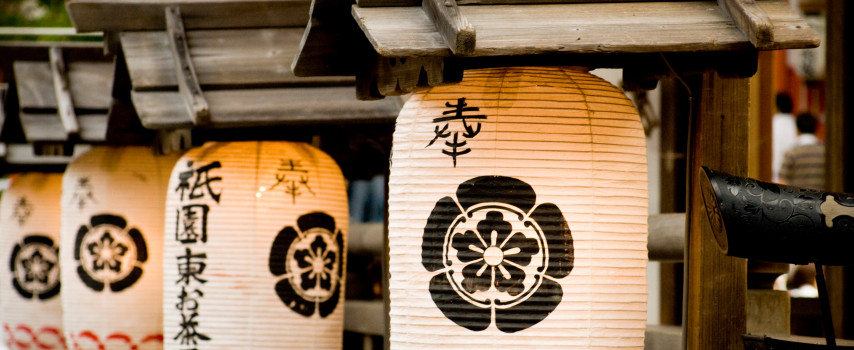
Source: Getty
What to do in Japan: 10 best events to attend
Once you’ve figured out the best time to visit Japan, you’ll want to explore what to do in Japan. The country is deeply rooted in customs and tradition, and hosts a variety of interesting events and festivals throughout the year. These events are full of life, showcasing the culture, history, and community spirit of Japan and offering a real look into what being Japanese is all about. We've put together a list of 10 top annual happenings you should check out when you visit Japan.
#1. New Year (Shogatsu, January)
Shogatsu is one of the most important holidays in Japan and is filled with rituals and customs, ranging from temple visits to enjoying mochi (rice cakes).
#2. Sapporo Snow Festival (February)
Every February, the city of Sapporo is transformed into a winter wonderland with gigantic, intricate ice sculptures.
#3. Cherry Blossom Festival (March-April)
Sakura season is arguably the most beautiful time to visit Japan. People gather in parks for “hanami” (flower viewing) picnics beneath the blooming cherry blossoms.
#4. Takayama Festival (April and October)
Known to be one of the most beautiful festivals in Japan, it features large floats, marionettes, and hundreds of lanterns illuminating the evening.
#5. Golden Week (Late April-Early May)
This is a collection of four national holidays in a week, making it one of the busiest holiday seasons.
#6. Gion Matsuri (July, Kyoto)
Wondering what to see and do in Kyoto, Japan? This is one of Japan's most famous festivals, featuring massive, hand-pulled floats that parade through the city.
#7. Aomori Nebuta Festival (August)
This event involves enormous lantern floats, music, and dance. It's a lively, must-see spectacle in the northern Tohoku region.
#8. Jidai Matsuri (October, Kyoto)
Celebrating Kyoto’s rich history, this festival features a large parade with costumes from different eras of Japanese history.
#9. Autumn Leaves Viewing (November)
As the country turns into hues of red, orange, and yellow, Japan's autumn foliage is a spectacle just as beautiful as the cherry blossoms.
#10. Chichibu Night Festival (December)
This winter festival features a parade of ornate floats, fireworks, and traditional music.
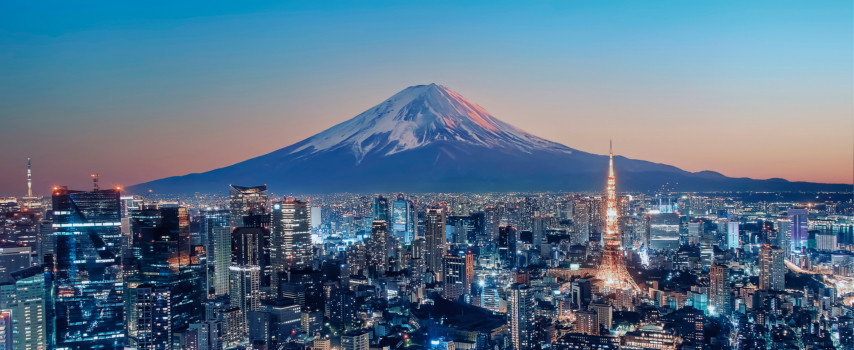
Source: Getty
What to do and see in Japan: 10 places to visit during your trip
From serene temples and lush gardens to towering skyscrapers and cities covered in neon lights, the vibrant island nation of Japan offers a fascinating contrast that lures travellers from around the globe.
Here, we explore what to do in Japan and the top sights to see that promise a rich and wholesome Japanese experience.
#1. Mount Fuji
Japan's highest mountain, Mount Fuji, is an iconic landmark and a popular destination for climbers.
#2. Tokyo Skytree
Get a bird's eye view of Tokyo city from this tallest tower in Japan.
#3. Fushimi Inari Shrine
Located in Kyoto, this shrine is famous for its thousands of red torii gates.
#4. Himeji Castle
Visit this UNESCO World Heritage Site, regarded as Japan's most spectacular castle.
#5. Nara Park
Home to freely roaming deer, and historic temples, this park in Nara is a must-visit.
#6. Hiroshima Peace Memorial Park
A sombre reminder of the tragic past, the park promotes peace and remembrance.
#7. Tsukiji Fish Market
Sample Japan's seafood delights at one of the world's largest fish markets in Tokyo.
#8. Okinawa Churaumi Aquarium
One of the world's largest aquariums, it holds a variety of marine life.
#9. Dotonbori
This bustling commercial street in Osaka is known for its exciting nightlife and food.
#10. The Imperial Palace
Located in Tokyo, the residence of Japan's Imperial Family is a sight to behold.
What to do in Japan: 10 cultural highlights
Want to experience some of Japan’s amazing culture on your holiday? Add these experiences to your to-do list.
#1. Tea Ceremony
Experience the traditional Japanese tea ceremony, a symbol of hospitality and respect.
#2. Origami
Try your hand at origami, the intricate art of Japanese paper folding.
#3.Ikebana
Discover Ikebana, the Japanese art of flower arrangement.
#4. Kimono Wearing
Dress in a traditional Kimono and step back in time.
#5. Onsen Experience
Soak in a Japanese hot spring or “onsen” for relaxation and rejuvenation.
#6. Japanese Cuisine
From sushi to ramen, exploring Japanese cuisine is a cultural experience in itself.
#7. Manga and Anime
Delve into the world of Japanese manga and anime.
#8. Geisha Culture
Experience an evening with geisha, Japan's traditional entertainers.
#9. Sumo Wrestling
Witness a sumo match, Japan's national sport.
#10. Zen Meditation
Practice Zen meditation at one of the many tranquil Buddhist temples.
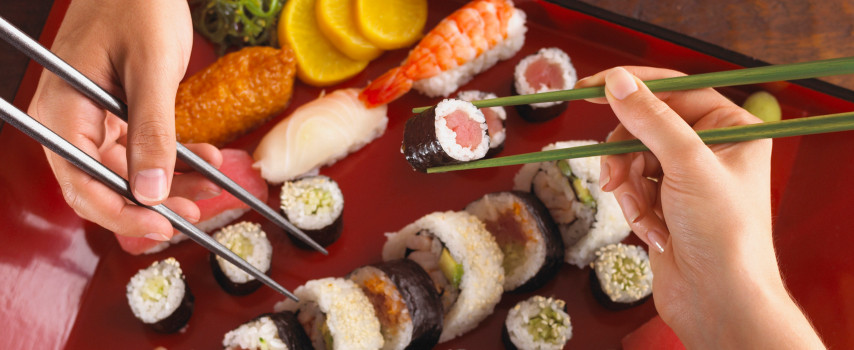
Source: Getty
What to eat and drink in Japan: 5 must-try menu items
Japanese cuisine is a delightful exploration of taste and tradition. Here’s our list of five food and drink items that are quintessentially Japanese, offering fantastic gastronomic experiences that are sure to become a memorable part of your journey in the Land of the Rising Sun:
#1. Sushi
An integral part of Japanese cuisine, sushi is vinegared rice topped with other ingredients like raw or cooked seafood, and vegetables. For an authentic sushi experience, visit one of the many sushi bars where skilled chefs prepare this delicacy right in front of your eyes.
#2. Ramen
Another staple of Japanese cuisine is ramen, a noodle soup dish that comes in various flavours like tonkotsu (pork bone broth), shoyu (soy sauce), and miso. Each region in Japan has its unique style of ramen, making it a culinary adventure to try them all.
#3. Sake
No trip to Japan would be complete without trying sake, a traditional rice wine. Served either warm or chilled, sake pairs excellently with a variety of Japanese dishes. Of course, it’s important to be responsible if you choose to consume alcohol and be aware of how your blood alcohol level may affect your travel insurance policy.
#4. Tempura
Tempura is a popular Japanese dish where seafood and vegetables are coated in a light batter and deep-fried to perfection. It's often served with a dipping sauce for a delightful crunch and flavour.
#5. Matcha Tea
Brewed from finely ground, premium green tea leaves, matcha tea is deeply intertwined with Japanese culture. Attend a traditional tea ceremony to learn how this vibrant, antioxidant-rich tea is prepared and enjoyed.
Most popular Japanese airports to fly into from Australia
Each of these airports in Japan offer an array of services to cater to travellers' needs and is well-connected to the major tourist destinations in their respective regions. Choose the one that suits your itinerary best and enjoy a smooth start to your Japanese adventure.
Narita International Airport (NRT) | Haneda Airport (HND) | Kansai International Airport (KIX) | Chubu Centrair International Airport (NGO) | Fukuoka Airport (FUK) | ||||
|---|---|---|---|---|---|---|---|---|
Located in Chiba, Narita is the main international gateway to Japan. It is well-connected to Tokyo, Japan's capital, and other major cities. The airport features a wide range of facilities including restaurants, shops, and comfortable lounges. | Situated closer to central Tokyo than Narita, Haneda Airport is now increasingly used for international flights. It’s known for its efficiency, cleanliness, and the stunning views of Tokyo it offers as you land or take off. | If your destination is the Kansai region, including cities like Osaka, Kyoto, and Nara, this airport is the ideal choice. Built on an artificial island in Osaka Bay, it boasts a unique design and a host of amenities.
|
| This airport serves the Chubu (central) region of Japan. It's a convenient gateway if you're planning to visit Nagoya, or the Japanese Alps, or historical cities like Takayama. |
| For those heading to the Kyushu region, Fukuoka Airport is the perfect entry point. It is one of the busiest airports in Japan, and its close proximity to the city centre makes it a convenient option for travellers. |
How to get around in Japan: Best transport options
Navigating through a foreign country might seem daunting, but rest assured, getting around Japan is far from complex. The country boasts an efficient and extensive transport network that caters to all, from the adventurous cyclist to the comfort-seeking taxi rider.
Let’s jump into some of the most popular ways to traverse Japan's diverse landscapes.
Bicycling
Japan is incredibly bike-friendly. Cycling is a fantastic way to explore both the bustling cityscapes and the serene countryside at your own pace. Many cities offer bicycle rental services, often conveniently located near major train stations, making it exceptionally easy to hop on two wheels and start your adventure.
Public Transport
Arguably the backbone of the country's transport network, Japan's public transport system is remarkably efficient.
Japan's long-distance bus network is a cost-effective option for intercity travel. Japan's high-speed Shinkansen bullet trains offer a fast, reliable, and comfortable travel experience across the country. In main tourist areas, trams offer a charming and convenient way to get around with a scenic view of the city's streets.
Taxis and Ride Apps
Taxis are widely available across Japan's cities and towns, and are a convenient, though slightly expensive, mode of transport. Most taxis accept credit cards, and some even have free Wi-Fi. Ride-share apps like Uber are less prevalent, but still an option in major cities like Tokyo and Osaka.
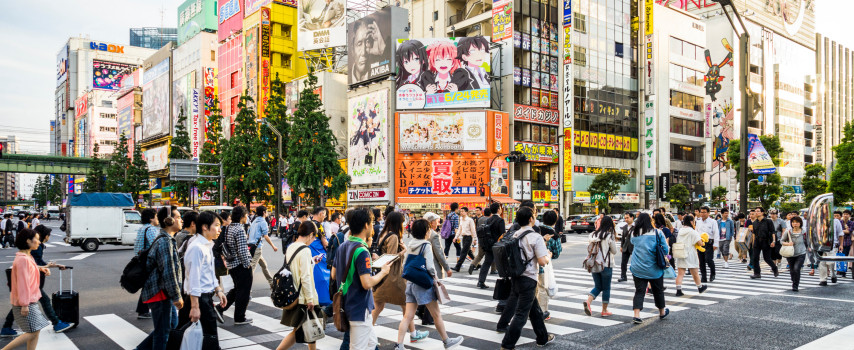
Source: Getty
Where to stay in Japan: Top neighbourhoods for tourists visiting Japan
Japan is a country that offers an intriguing mix of traditional culture and modern vibrancy. When planning your trip with our Japan travel guide, choosing the right neighbourhood to stay in can greatly enhance your experience.
Here’s our list of the most recommended neighbourhoods in Japan that blend comfort, convenience, and culture.
Shibuya, Tokyo
Known for its famous Shibuya Crossing and its vibrant nightlife, Shibuya offers a wide range of accommodations. It's a great place to stay if you want to be in the heart of Tokyo's energy and action.
Asakusa, Tokyo
Asakusa is the spot to soak up Tokyo's history. Traditional markets, ancient temples, and lovely ryokan (traditional inns) create a charming atmosphere. It's a peaceful base amid the bustling city.
Gion, Kyoto
Steeped in tradition, Gion is the geisha district of Kyoto. Staying here offers a glimpse into old Japan with its wooden machiya houses, teahouses, and the famed Yasaka Shrine.
Namba, Osaka
Known for its food and entertainment, Namba is home to Osaka's famous Dotonbori Street. You'll find a wide variety of eateries and shops, perfect for foodies and shopaholics alike.
Hakata, Fukuoka
A perfect blend of shopping, dining, and culture, Hakata is Fukuoka's major commercial centre. It's also home to the beautiful Kushida Shrine.
Hiroshima City Centre, Hiroshima
Convenient and full of attractions, the Hiroshima City Centre is an ideal base for exploring the city's historical sites, including the Peace Memorial Park.
Naha, Okinawa
Naha is the gateway to the tropical Okinawa islands. Kokusai Street, the city's main street, is lined with shops, restaurants, and bars.
Sapporo City Centre, Sapporo
Perfect for winter enthusiasts, Sapporo's city centre offers easy access to the best ski resorts, the famous Sapporo Snow Festival, and a host of hearty Hokkaido cuisine.
Kanazawa City Centre, Kanazawa
Known for its well-preserved Edo-era districts, tea houses, and the beautiful Kenroku-en Garden, Kanazawa offers a slower pace and a touch of traditional Japan.
Shinjuku, Tokyo
From quiet parks to neon-lit streets, Shinjuku offers a contrast of Tokyo life. Staying here allows you easy access to the city's largest nightlife district, shopping areas, and the tranquil Shinjuku Gyoen National Garden.
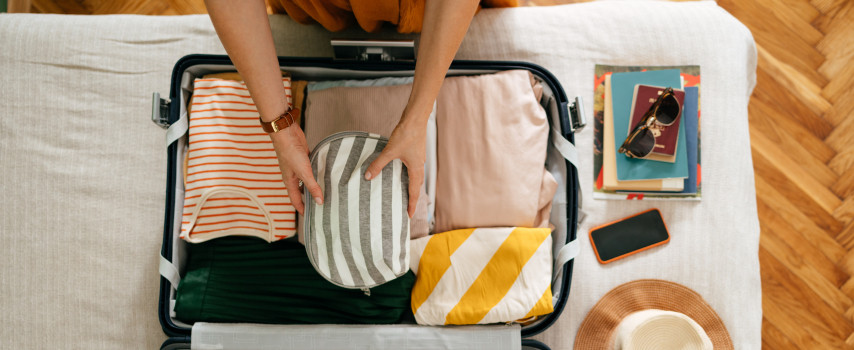
Source: Getty
What do you need to travel to Japan? Your Japan packing list
Have you been asking yourself, “What do I need to travel to Japan?” before embarking on a thrilling adventure to the land of the rising sun? Before you get too swept up in the excitement of planning your itinerary, let's talk about what to pack for your trip to Japan.
Here are some of our most recommended items to bring to Japan:
Passport and visa
First things first. Don't forget your passport! If you're an Australian citizen, you won't need a visa for tourist stays of 90 days or less. But do ensure your passport has at least 6 months of validity from the day you leave Australia.
Japanese Yen
While Japan is gradually becoming more card-friendly, cash is still king in many places, especially smaller towns and cities. Bring some Japanese Yen with you for convenience.
Pocket Wi-Fi, SIM card or eSIM card
Stay connected during your journey with a pocket Wi-Fi or a Japanese SIM card. You can generally purchase these upon arrival at the airport. If you’ve got a compatible smartphone, you can also get an eSIM to use while you’re in Japan.
Comfortable footwear
Whether you're exploring bustling Tokyo or hiking up Mount Fuji, you're going to be on your feet a lot. Pack comfortable walking shoes to save your feet from unnecessary distress.
Travel adapter
Japan uses Type A and B outlets, which are different from those in Australia. Be sure to pack a travel adapter so you can keep all your devices charged.
Lightweight rain jacket and umbrella
The weather can be unpredictable, so come prepared with a lightweight rain jacket. An umbrella can also come in handy for sudden showers or as a shield from the sun.
Medication and first aid kit
Bring any necessary prescription medications, along with a basic first aid kit. While Japan has an excellent healthcare system, having these essentials on hand can save you time and stress.
Phrasebook or translation app
While you'll find many English signs and menus in the big cities, a phrasebook or translation app can be a lifesaver in more rural areas.
Travel insurance
In the case of an unforeseen accident or emergency situation, travel insurance may be able to help you get your travels back on track. That’s why it’s smart to consider protecting your trip to Japan with travel insurance.
Travel safety app
Good travel apps can help you travel more safely and confidently. Our Cover-More App can help with this by providing you with the ability to contact emergency assistance 24/7 through a tap-to-call "Assistance" button, sending real-time safety alerts if there’s an incident at your destination, and more.
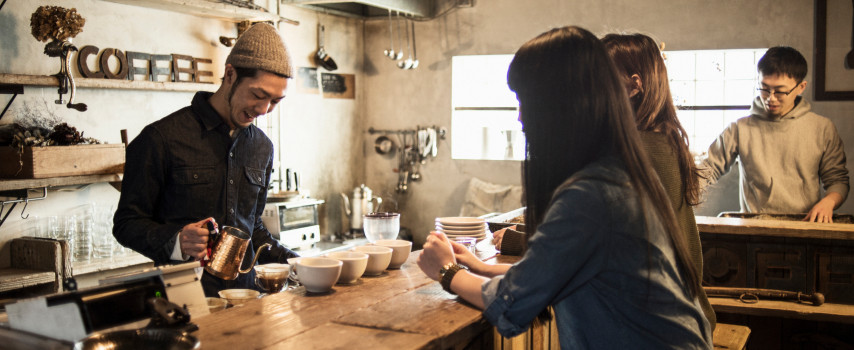
Source: Getty
8 Japanese words and phrases to know when visiting Japan
If you're preparing for a trip to Japan, it's helpful to learn a few basic phrases to enhance your journey. Here are eight key Japanese words and phrases that will make your travel experience smoother and more enjoyable.
#1. Konnichiwa (こんにちは)
This is the Japanese word for 'Hello'. Use it to greet people you meet throughout the day.
#2. Arigatou Gozaimasu (ありがとうございます)
This phrase means 'Thank you very much'. It's polite to use it when someone helps you or provides a service.
#3. Sumimasen (すみません)
This versatile expression can mean 'Excuse me', 'Sorry', or 'Thank you'. Use it when you want to get someone's attention, apologise, or express gratitude.
#4. Eigo o hanasemasu ka? (英語を話せますか?)
This phrase translates to 'Do you speak English?' and can be useful when you're seeking help or information.
#5. Toire wa doko desu ka? (トイレはどこですか?)
This phrase means 'Where is the bathroom?' and could be crucial in a pinch.
#6. Onegaishimasu (お願いします)
This is a polite term meaning 'Please'. Use it when you're requesting something.
#7. Hai (はい) / Iie (いいえ)
These words mean 'Yes' and 'No', respectively. They're fundamental to any conversation.
#8. Sayounara (さようなら)
This is how you say 'Goodbye' in Japanese. Use it when you're parting ways with someone.
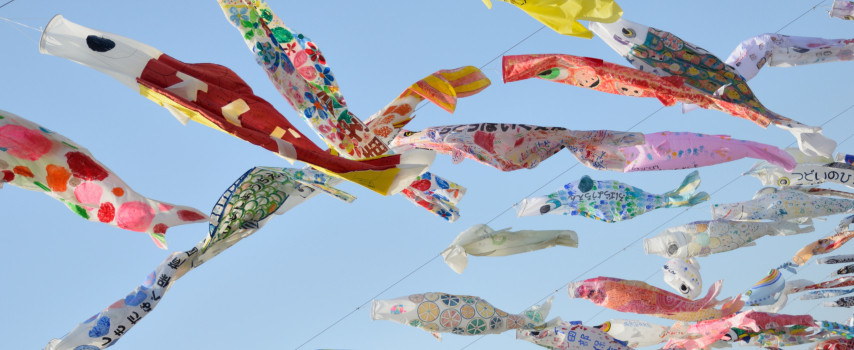
Source: Getty
Public holidays to keep in mind when planning your Japan trip
When planning a trip to Japan, it's helpful to consider the country's public holidays. These special days could influence the availability of certain tourist spots, accommodation rates, and even local transportation schedules. Plus, they could also provide fantastic opportunities for you to engage with Japanese culture while you’re on your holiday.
Here are some important public holidays that travellers from Australia should be aware of:
New Year (Shogatsu)
Celebrated from 1-3 January, the Japanese New Year is a time for family, food, and good fortune. Many businesses close during this period, so plan accordingly.
Golden Week
This is Japan's busiest holiday season, occurring from 29 April to 5 May. It includes four national holidays: Showa Day, Constitution Day, Greenery Day, and Children’s Day. Expect heavy crowds at tourist spots and high prices for travel and accommodation.
Obon Festival
Taking place in mid-August, this Buddhist event is a time for Japanese people to honour their ancestors. It's marked by beautiful lantern festivals and traditional dances across the country, particularly in Kyoto.
Emperor’s Birthday
Celebrated on 23 February, the Emperor's Birthday is the only national holiday that acknowledges a living person. Many people visit the Imperial Palace in Tokyo on this day to see the royal family's public appearance.
Ready to lock in your Japan visit?
Discover how Cover-More travel insurance can help safeguard your trip to Japan.